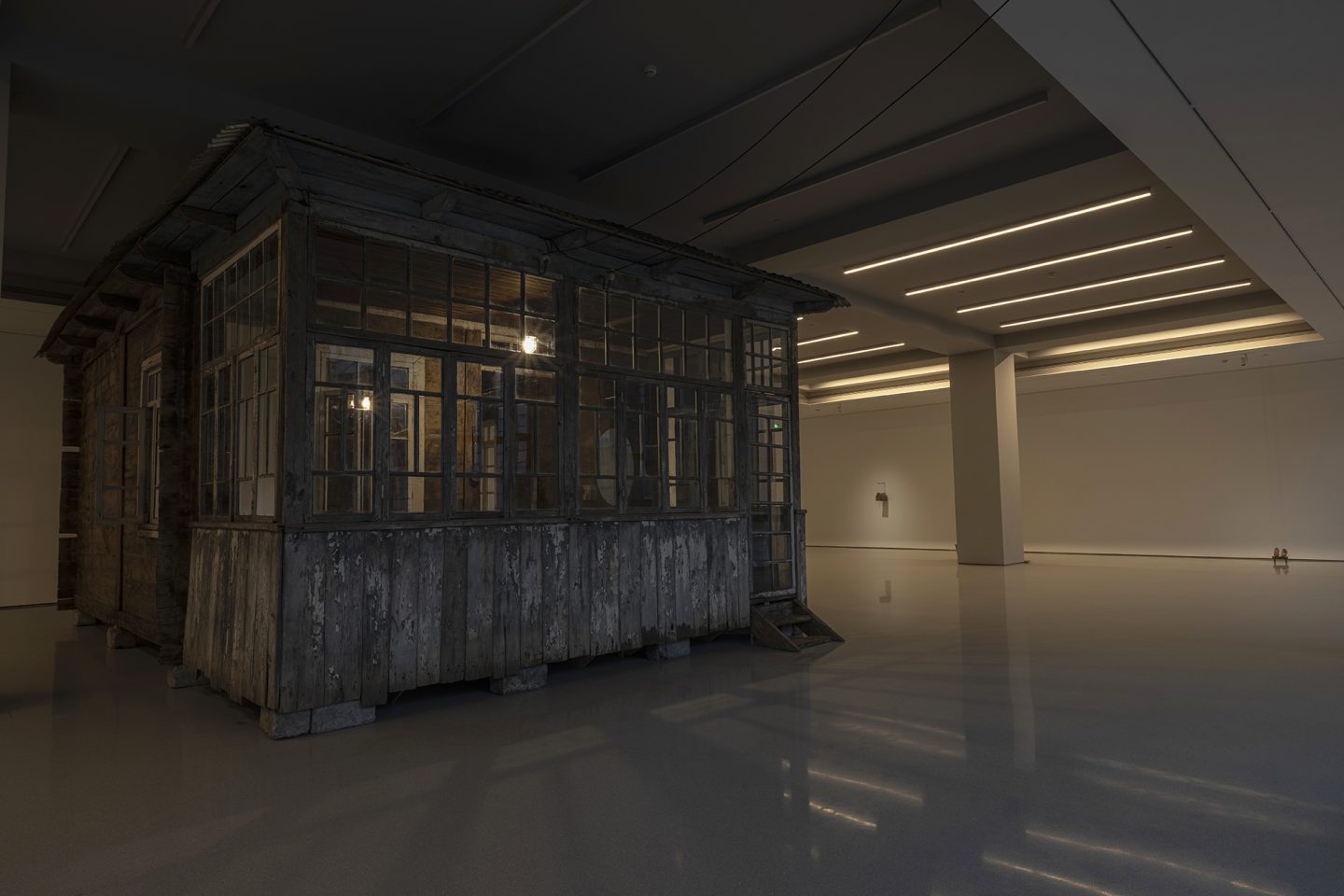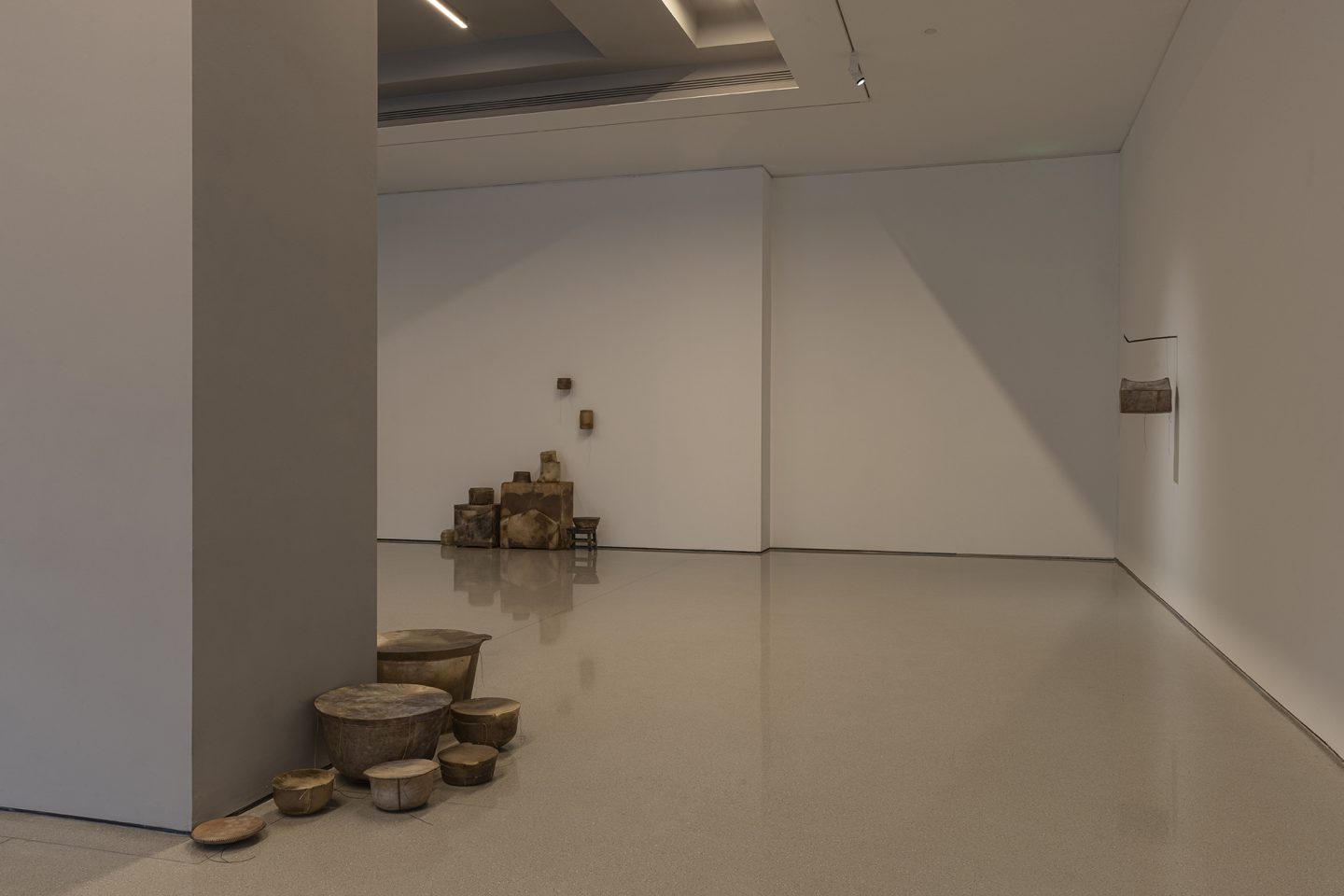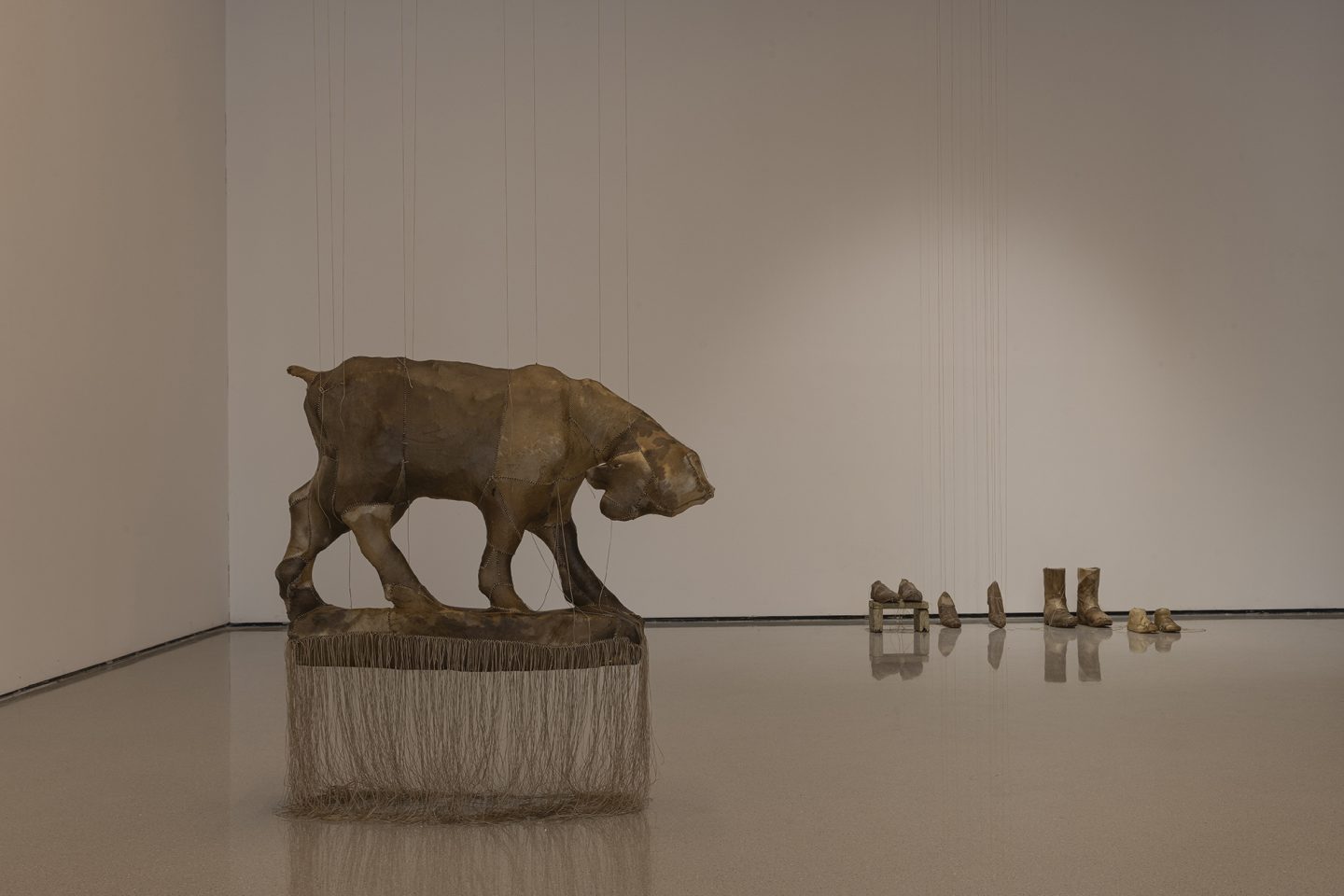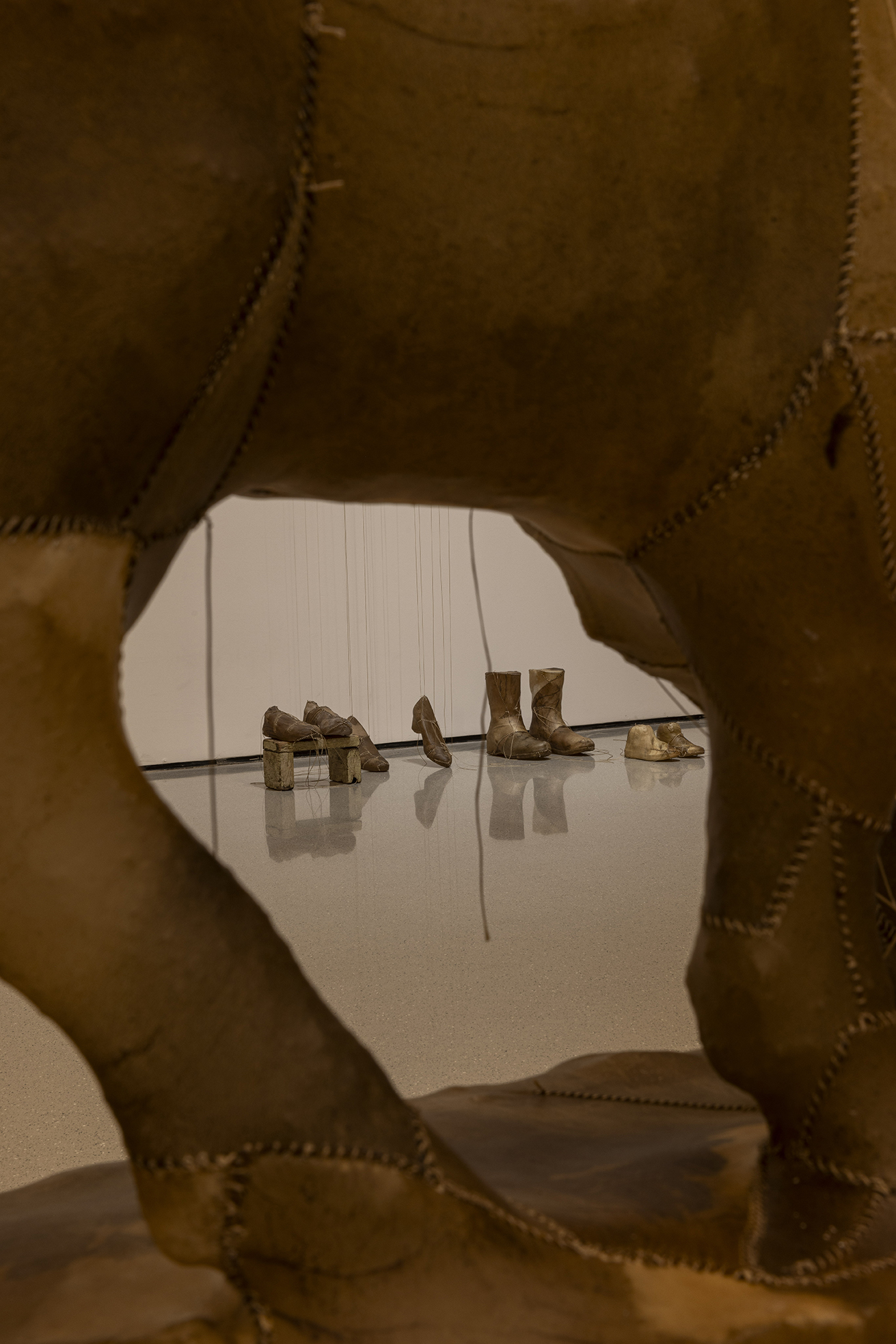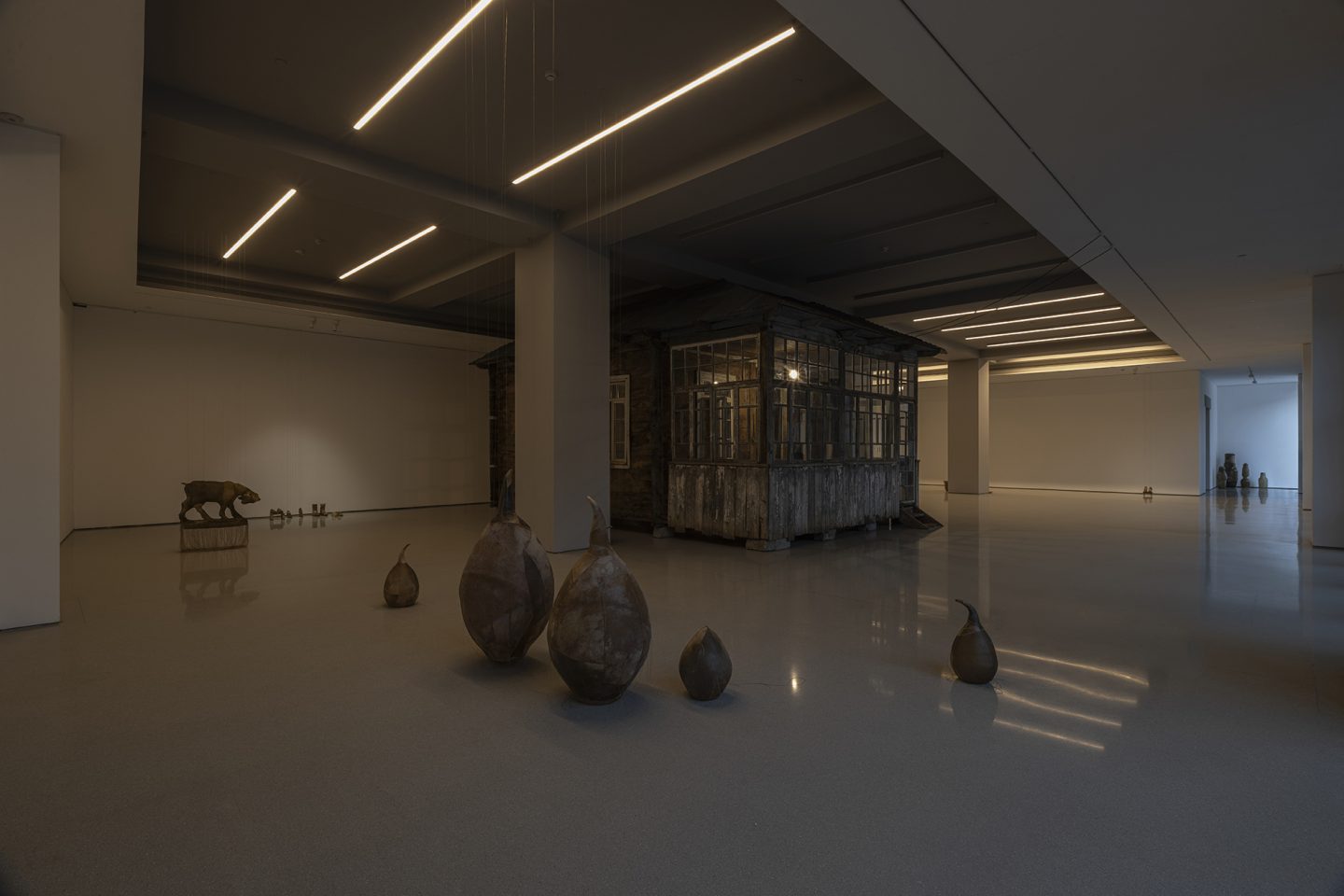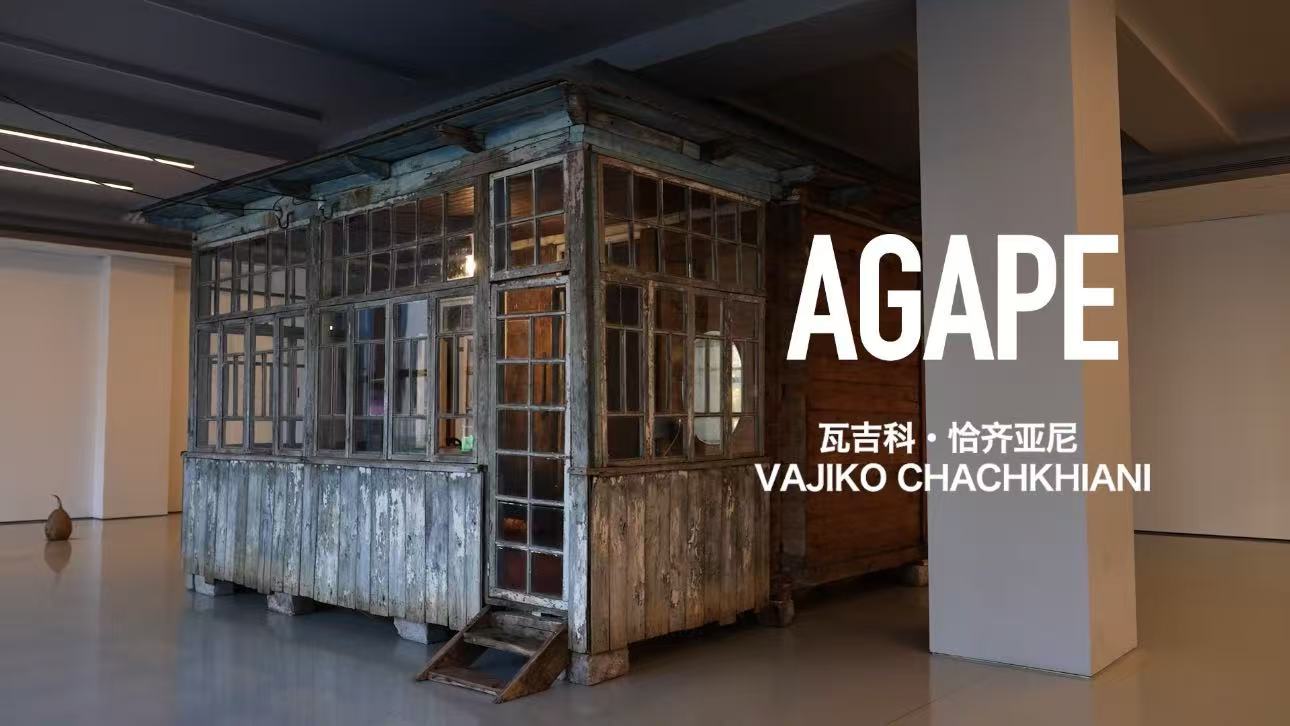
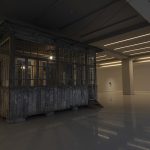







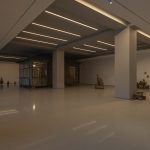

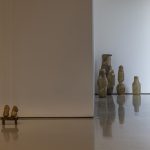




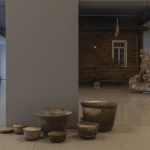








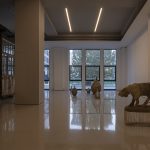
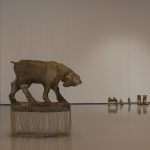
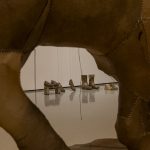





We are pleased to announce Agape, the second solo exhibition of Vajiko Chachkhiani at WHITE SPACE, opening on Saturday, November 8, 2025, and running through January 10, 2026. The exhibition features a newly commissioned version of the artist’s iconic rain house installation Living Dog among the Dead Lions (Agape) alongside a series of leather sculptures. Through a poetic language of materials, the exhibition probes the dialectics of life, memory, and trauma.
The word, agape, originates from ancient Greek, signifying the highest form of selfless love. As the exhibition’s title, it establishes a narrative concerning individual and collective psychological states. At its center stands Chachkhiani’s rain house–an inhabited yet uninhabited domestic space filled with traces of life. Originally presented as the Georgian Pavilion at the 2017 Venice Biennale, the work has been reinterpreted here in a more distilled form. Inside, rain falls endlessly. Under dim, warm light, furniture and household objects quietly deform and decay in the dampness, while the exterior of the house remains intact. This disjunction between inside and outside evokes the way historical shadows infiltrate the psychic space of the home. Rain, as both a life-giving and cleansing force, simultaneously washes and exposes hidden wounds while accelerating inner disintegration. The house becomes a psychological mirror, silently articulating the repressed memories of family and self. Its title, borrowed and rewritten from Ecclesiastes, alludes to the fragility of existence and the enduring human will to live.
Surrounding the rain house is a group of leather sculptures that further extend the exhibition’s philosophical inquiry. These works are made by wrapping everyday objects–aged furniture, abandoned stone figures from village parks–in recycled calfskin. Once the objects are removed, only hollow skins remain, ghostly shells that seem at once burdened with the weight of the past and as light as breath. “These forms are emotional echoes, imprints of memory,” the artist writes in his notes. Often arranged in groups–such as confrontations between sheep and lions or intimate connections between mother and child–they evoke structures of power, intimacy, and vulnerability embedded within social and familial systems. Leather, a material tied to both pain and mortality, gains a spectral permanence through its separation from the original object.
These sculptures are not heavy monuments to history, but rather airy “resonances” that drift through space like thoughts, questioning the ephemerality of emotion in a capitalism age. As the artist observes, the tragedy of capitalism lies in the “transience of feelings and the imbalance of the spirit.” His work, by contrast, seeks to revive empathy, compassion, and solidarity. The solid rain house decays beneath a calm exterior; the supple leather grows lighter through internal dissolution. In their contraposition, they seem to ask: will the unacknowledged shadows ultimately consume life, or, once trauma is released, can existence rise–light as a feather?
About the Artist
Vajiko Chachkhiani operates somewhere between the outside world and the human psyche, bringing the shadowy aspects of our conditio humana (human condition) to awareness through subtle and intriguing visual poetry. Frequently based on performances or transformative actions, many of his sculptures have an affinity to minimalism. At the same time, they are charged with narrative meaning. Through sculptures and installations, he seeks to address psychological conditions such as loneliness, violence, and angst, weaving them with topics from religion, politics, literature, and poetry. Reoccurring themes in Chachkhiani’s work are conflict, culture/nature, and the oscillation between the outer reality and the inner life of the individual being. Chachkhiani’s work includes films, sculptures, performances, photographs, and large-scale installations.
Vajiko Chachkhiani (b. 1985 in Tbilisi, Georgia) lives and works in Tbilisi. He studied at the University of the Arts (UdK), Berlin, with Prof. Gregor Schneider until 2013. Previously, he studied Mathematics and Informatics at the Technical University of Tbilisi. His solo exhibition includes: Agape, WHITE SPACE, Beijing, China (2025); Big and Little hands, SCAI The Bathhouse, Tokyo, Japan (2024); Finger, Fist, and Thumb Sucking, WHITE SPACE, Beijing, China (2022); Lower than the Sky, Kunstmuseum Brandts, Odense, Denmark (2022); Heavy Metal Honey, Bundeskunsthalle, Bonn, Germany (2018); Many Lives Passing Through While Imitating Death, Kunsthaus Dahlem, Berlin, Germany (2015); Both, Museum für Gegenwartskunst, Siegen, Germany (2014). His works were also presented at 50——90: The Tenth Anniversary of the Long Museum, Long Museum, Shanghai, China (2024);Yours Truly, Museum Morsbroich, Leverkusen, Germany (2023) A Higher Calling, WHITE SPACE, Beijing, China (2021); NIRIN – The 22nd Biennale of Sydney, various venues, Sydney, Australia (2020); A Good Neighbour, Pinakothek der Moderne, Munich, Germany, in cooperation with Istanbul Biennale (2018); Wieder und Wider, Hamburger Kunsthalle, Hamburg, Germany (2018). In 2017, his work “Living Dog Among Dead Lions” was shown in the Georgian Pavilion at the Venice Biennale. Chachkhiani was nominated for the Future Generation Art Prize 2017 by PinchukArtCentre, Kiev, Ukraine, and he received Villa Aurora Fellowship in Los Angeles and a Residency Grant of Tokyo Arts and Space (TOKAS) in 2019, and the Rubens Promotional Award in 2017.
